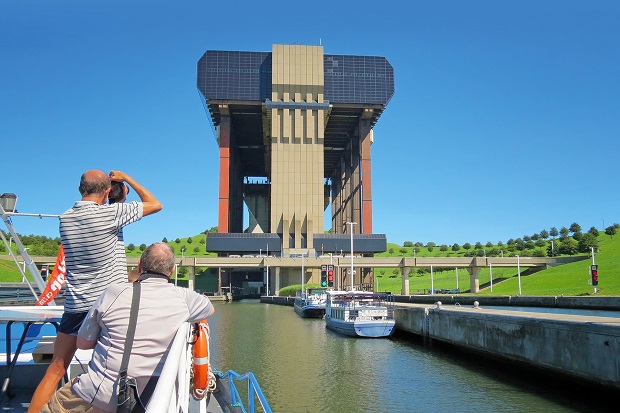- Daily & Weekly newsletters
- Buy & download The Bulletin
- Comment on our articles
Tourism in Belgium: Cast-iron classics - Delve into Belgium’s rich industrial past
BRUSSELS
Tour & Taxis, a transformed industrial site on the eastern border of Molenbeek, features century-old warehouses, a large park, a collective gardening project, a cafe and numerous exhibition spaces, including Bubble Planet Experience, WOM and Battle Kart. A pedestrian bridge connects the popular hangout and event location with the city centre. Check out its current Summer Programme of activities.

La Fonderie, once home to a foundry that manufactured the gates of New York Zoo, now hosts a museum dedicated to the history of labour. It’s situated in the heart of “Little Manchester”, Brussels’ former industrial powerhouse in Molenbeek, and offers guided tours in the surrounding areas, linking its history with the current urban reality. The temporary exhibition Unfree Labor is running until January 2024. During the summer months La Guinguette de la Fonderie (pictured) is a popular place for get-togethers and it supports local food and drink businesses such as Brueels Beer Project.
Discover the history of Brussels' underground tunnels and drainage system at the Sewers Museum. This unexpected offer among the city's cultural and heritage institutions reveals the bowels of the capital and how the river Senne plays a key role in the almost 2km-long sewer network.
FLANDERS
One of Flanders’ most successful repurposing projects is C-Mine (pictured main image), the former Genk coal mine transformed into an event centre and hub for the creative industries. It’s a protected historical site with much of the industrial infrastructure intact. The C-Mine Expedition takes visitors through underground tunnels and stories from mining history. There are also exhibitions as well as theatre and concerts.
Particularly in Flemish cities, look out for cloth halls – medieval commercial markets that are remnants of Belgium’s once world-renowned textile trade. Many have undergone major restoration and transformation, such as the one in Ypres, now housing the In Flanders Fields Museum, or the flamboyantly gothic structure in Ghent.

Ghent’s museum dedicated to industries gone by is, appropriately, housed in a cotton mill built in 1905. Along with the permanent collection are temporary exhibitions; the current one is About People and Machinery. There are also activities for kids, nocturnes, a cafe and a shop.
The Permeke is the hub of Antwerp’s library system, and it happens to be housed in a 1920s Art Deco Ford garage. The building is protected, and the library has a cafe and an auditorium that hosts events. Even if you don’t need to borrow anything, it’s a great place to nose about and spend some quiet time reading, thinking or daydreaming.

The Plantin-Moretus Museum in Antwerp is in the 16th-century home and bookbinding and printing press belonging to Christophe Plantin and his son-in-law Jan Moretus. Aside from providing a fascinating history of one of Europe’s oldest printers, the architectural heritage is hard to beat. The reading room is currently closed.
WALLONIA
Wallonia played a pioneering role in the industrial revolution that shaped 19th- and 20th-century Europe; its former heartland stretches from Mons to Liège, with many sites in the black country around Charleroi. They include former coal mine Bois du Cazier, a testament to the region’s coal trade and a memorial to the 262 miners who died in a disaster here in 1956.
Tobacco has been cultivated in the Semois valley since at least the 16th century, and you can explore the tobacco fields thanks to a dedicated route divided into two signposted circuits of 60km and 70km. Both start in the village of Alle, with a guidebook available for €2. Learn how tobacco was at the centre of a major cross-border contraband business with neighbouring France.

With its neoclassic architecture, the former colliery Grand-Hornu, near Mons, was one of the finest 19th-century miners’ villages. Now the Unesco site harbours two renowned contemporary art and design museums, MACS and CID, plus an upmarket restaurant, numerous industrial relics, a summer terrace and holiday activities.
Walk in the footsteps of miners when you descend the shaft of Blégny-Mine, near Liège, on a two-hour visit of the colliery (children must be at least 1m tall to join in). One of four authentic coal mines accessible to visitors, the Unesco-recognised site offers a fascinating insight into the dangerous and difficult working conditions experienced by miners.
The Unesco world heritage site Bois du Luc is a preserved “model village”: a self-contained community for miners and their families, now transformed into an eco-museum. Walk around the exceptional site close to La Louvière and learn about working and living conditions.

Also on the Unesco heritage list are the unique hydraulic boat lifts of the Canal du Centre, which soar above the surrounding Hainaut countryside. The site welcomes tourists, offering museums and other activities. One of the best is Rivertours boat trips (pictured) along the Canal du Centre that run to and from Halle, Ronquières and Strépy-Thieu until the end of September. It’s an opportunity to marvel at the astonishing construction of the lift that’s made up of eight steel cables, 236 rollers and four train tracks.
In Tournai, the cloth hall in the Grand Place has been successively restored since its original 13th-century wooden structure. It's just one of the attractions in this historic centre of this Hainaut city.
This article was updated in August 2023.














